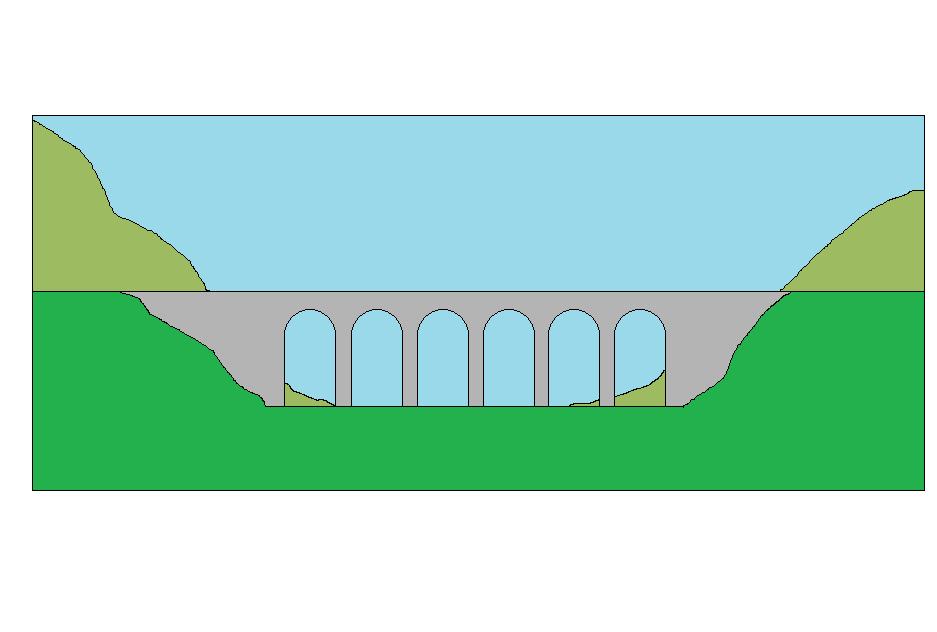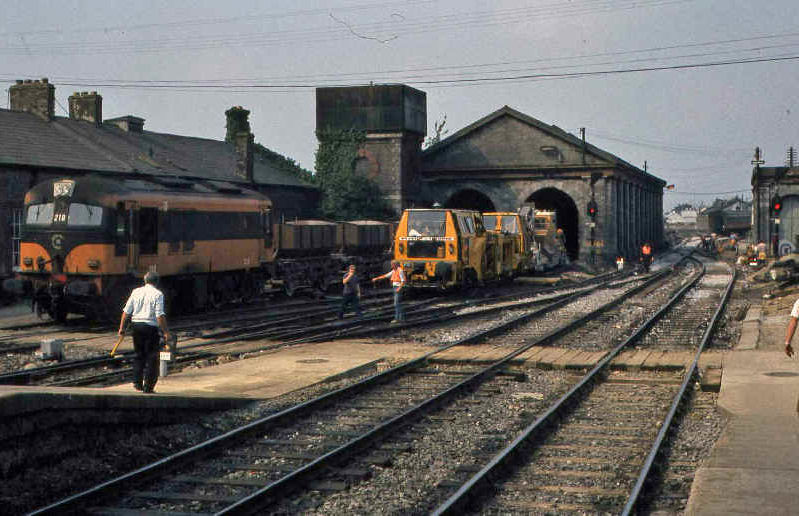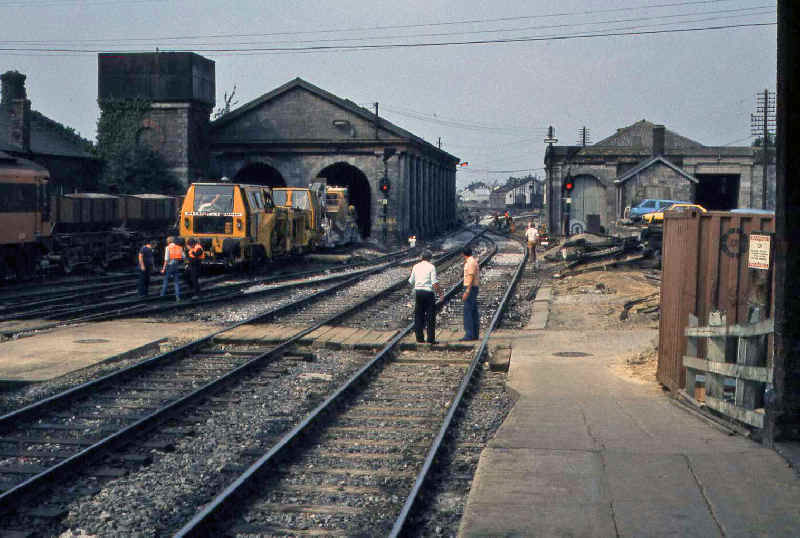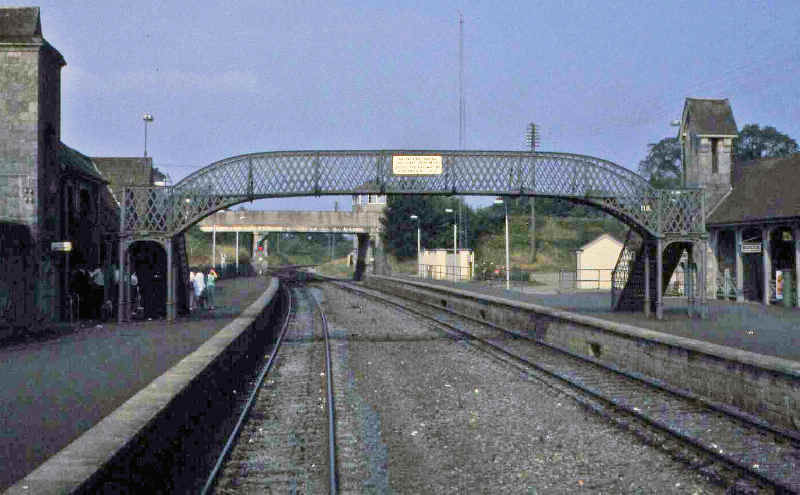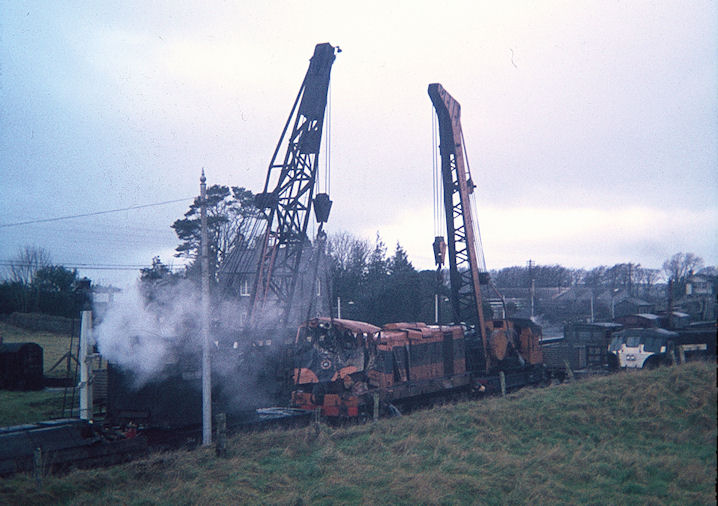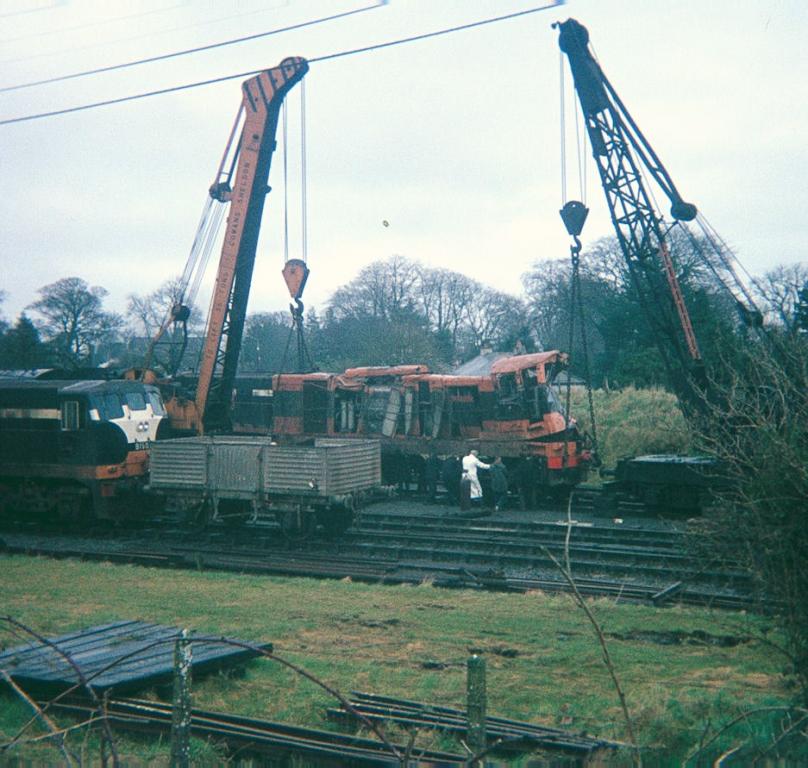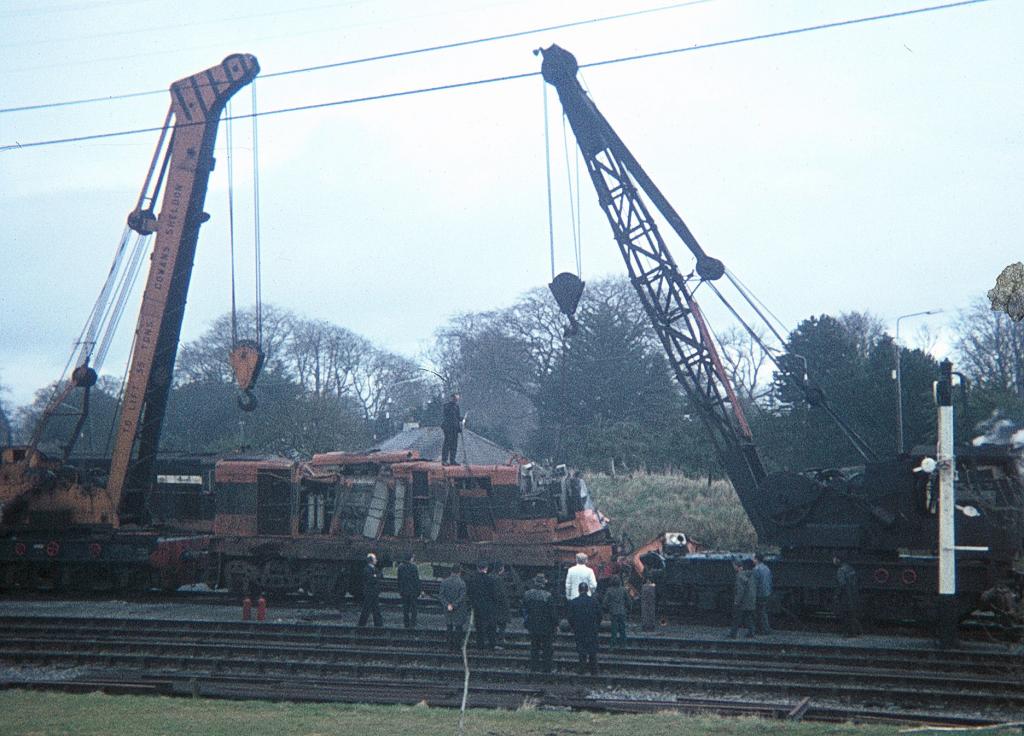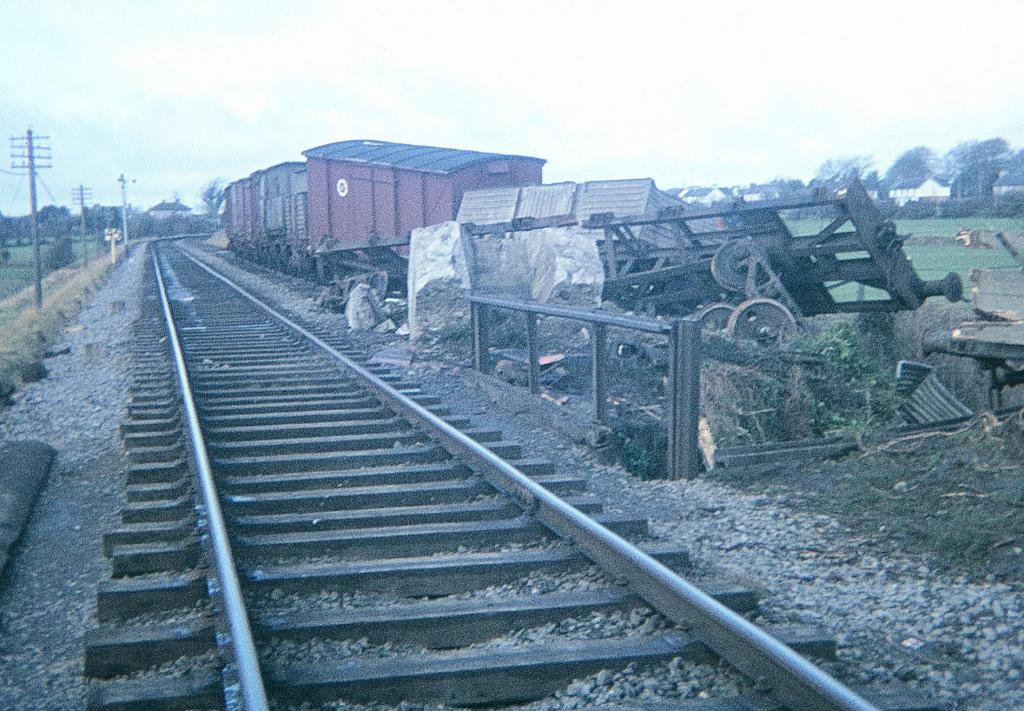-
Posts
1,037 -
Joined
-
Last visited
-
Days Won
5
Content Type
Profiles
Forums
Events
Gallery
Everything posted by josefstadt
-
The volumes of locos produced '... 504 0f 077 & 085 with only 252 of 111 & 8113 ...' seems strange. Any idea why it isn't, say, 500 or 250?
-
That's going to be one heck of a layout!
-
Is it an optical illusion, or is there something unusual about the coupling on the tender of the Class 58 in pic 3 / post 81?
-
From a modelling perspective they were probably all the same, at least visually on the exterior. However, there does seem to be some confusion regarding the number of seats they had following conversion. The IRRS (Journal 101 Oct '86), the 3rd edition of Locomotives & Rolling Stock of IÉ & NIR (Doyle 1987) and the 1st edition of Irish Railways Traction & Travel (Metro 1987) give a total of 44 seats in 1518/20. The 3rd edition of Irish Railways Traction & Travel (ITG 1994) has 45 seats in 1508/09, while the 4th edition of this book (ITG 2004) has 47 seats in these coaches. Can anyone confirm the correct number of seats in these coaches? Also how were the seats laid out? For example, in 1518/20 were there 11 full bays of 4 seats, or 10 bays of 4 and two bays of two? This could be important for modifying the seating inserts in the Murphy models.
-
Stephen, 1518 and 1520 were converted to Snack Cars in 1986 so they initially ran in the CIÉ livery. I'm not sure when they reverted to their original form, or whether they ever received the IR/IÉ livery. 1509 was fiited out as a Snack Car in 1991. I was unable to find an introduction date for 1508 as a Snack Car, but I'd assume that both it and 1509 ran only in the IR/IÉ livery.
-

071 and 073 pull the IRRS railtour to Cork
josefstadt replied to gm171 kk's topic in Photos & Videos of the Prototype
A great record of a wonderful day out. Thanks to Shane Roberts and the IRRS for organising it, to all the IÉ staff for putting it together and operating the trains on the day and to the Wanderer, and others, for the pics and videos of it. -
Fantastic work Patrick. The layout just oozes atmosphere!
-
Wunderbar! Looks fantastic. Well done.
-
As far as I remember, there were customs checks at both GVS and Amiens St / Connolly for the non-stop 'Enterprise' services, while the stopping services were examined at Dundalk and Goraghwood. After Goraghwood closed in the mid-1960s I presume that the customs was moved to Portadown and then back to Newry when that station re-opened in 1984. I travelled to and from Belfast quite often in the late 70s / early 80s. For passengers leaving Up stopping trains at Dundalk the customs officers had tables set up un the platform. The up platform was separated from the rest of the station by a fence and after clearing customs and immigration, one exited 'into the Republic' through the gate at the foot of the footbridge ramp. However, for passengers travelling on to points further south the check, more often than not, consisted of a cursory walk through the train by one of the customs officers. Sometimes, usually around Christmas, or if someone had a lot of shopping bags, there might be a quick examination of the goods but people were adept at stashing the majorty of their dutiable purchases! I, on the other hand have no great recollection of the Northern customs. Presumably as most people travelled north to shop the were much fewer items to be checked.
-
A Tale Of Two Trams: RTÉ ONE Tuesday July 9th @ 21.35 hrs Documentary about life on the two Luas lines.
-
Indeed, our thoughts are with all those affected by this tragedy. However the handling of the atermath of this terrible event raises some questions: Why did it take over twelve hours for the Gardai to release the scene? Why did they deem it necessary to take control of all four tracks for the whole time? If the Gardai had released the Down lines earlier could a limited service have been provided over them? If it is not currently possible to operate such a service, should consideration be given to providing some form of bi-directional signalling on the slow lines?
-
The real viaduct stands out and is more dramatic in Rich's photos, whereas in Anhony's ones it is largely lost in the surrounding scenery. I'd agree with Hunslet and Rich. Keep the hills / high ground behind the tracks on either side of your viaduct with clear sky behind the viaduct itself. Dave's excellent work deserves to stand out. Something like The valley behind the viaduct could, as has been suggested, swwep down to the sea or a lake or to hills in the far distance.
-
-
Absolutely brilliant! The railway then had so much more variety and interest than today's plastic version. So much more modelling potential. The photo of Portarlington had me puzzled for a while - it is back to front and should look like
-
Stephen, The copyright for the NJ McAdams pic would be with the IRRS. Barry Carse would be the copyright owner for his picture. Both can be contacted through the society.
-
I'd have to agree with BosKonay. The majority of the critisim levelled at the DART models was constructive. This is evidenced by the at that Eoin has taken it on board and what has evolved is a much more attractive model. Don't forget that this is a commercial venture and that those buying a model for a not inconsequential sum deserve to get the best that can be achieved. I spoke in person to Eoin at the Kilbarrack show last year and I think that he appreciated my comments. I still have some issues regarding the model, the 'face' of the model and the new pantograph. On the real thing the curve of the roof is not continuous. There is a tight radius curve on each side where the roof starts and a more gentle curve in the middle. On the model the curve seems to be one radius all the way across. This may be just an optical illusion in the photos - I hope it is. Another issue on the model is where the small grey section intrudes into the front of the cab. This does not occur in the prototype. A more serious issue, to my mind, is the shape of the pantograph head. In the model this appears to be flat whereas in the prototype the outer ends bend down. The downward bend is vital for smooth operatio[/i]n through places such as turnouts and crossovers. I feel that the flat head will be likely to snag sections of catenary where they merge. A more pedantic comment would be that the pantograph arm should be red, not toned down silver.
-
I too would agree with most of the comments already posted. While sound may be attractive in the short term, after a while it gets tedious and, to my ears, it doesn’t sound realistic in most cases. A better option, which I’d like to see added, would be the ability to configure the marker lights for shunting - one white and one red light at each end of the locomotive at the same time.
-
I'd have to agree JHB. The full set with a maroon liveried Hunslet at each end looked the biz! The later liveries didn't have the same impact.
-
Hi Dave, I think the site you are looking for is http://www.freewebs.com/2810gricer/apps/photos/album?albumid=4749177
-
Tom, the MkIV (CAF) sets were not ordered to replace the MkIII stock, but to allow for the withdrawal of the Cravens and some of the worst examples of the MkII fleets. The MkIVs were to take over all services on the Cork line with the displaced MkIIIs being cascaded to other lines. This would have allowed the withdrawal of the Cravens, along with some improvement in frequencies on these lines. It wasn't until later that the decision was taken to replace all loco-hauled services, except for the Cork and Belfast ones, with railcars. Indeed, Dick Fearn is reported to have stated that if he had been in charge when the new stock for the Cork line was being ordered then it would also have been railcars and not the MkIVs.
-
Another great scene and story from Tara Jct. Fantastic work Noel!
-
Thanks for the kind words lads, glad you liked the photos. From the state of 125 it is clear why it was never quite the same again!
-
Some photos of the aftermath of the Roscommon crash. Sorry that they aren't of great quality, I only had a Kodak 'Instamatic' camera at the time. The photos were taken on Saturday 23 February, a week after the crash. Two steam cranes, the Limerick one on the left and the Inchicore one on the right, lifting 125 in the yard at Roscommon. When the loco had been recovered on the previous Sunday it was discovered that the bogies on which it had been placed for the journey back to Inchicore were the wrong way round. So, over the weekend of 23/24 February the two cranes returned to Roscommon to rectify this. General view of Roscommon with work on rectifying 125's bogie problem going on on the right. The Up Westport is in the station, hauled by 176 and another Bo-Bo. Note also the orange coloured per-way van on the left and the complete absence of hi-visability clothing. Another view of the two cranes lifting 125. The extent of the damage to the locomotive can be seen. The driver certainly had a fortunate escape, given the damage to the cab. The damage to the cab meant that it was 'out of gauge' for the move to Inchicore, so part of it was cut away and can be seen dumped on the ground behind the loco. Note the man on the roof of the locomotive. He had just used the oxy acetylene torch to cut away the part of the cab roof. The locomotive was hauled to Inchicore on 1 March. The scene at the crash site. Debris had been cleared from the running line and services had resumed past the site on the evening of the day of the crash (16 Feb). The bogie wagon had been immediately behing the locomotive and the remainder of the train, about 33 wagons, was composed of 4-wheel stock. The displaced heavy cast concrete buffer stop can be seen in front of the wagons. I can't imagine that if the same incident happened now that the line would, under the current H & S regime, be reopened with such speed. It is also interesting to rember that just four days after these photos were taken there was another serious derailment of the CIÉ network at Longford. But that's a story for another thread.
-
One thing I remember about the aftermath of the crash was that the surrounding fields were littered with empty packaging from footballs which were en route from from a factory in, I think, Ballina (ttc will no doubt know who and where they were). Every child in the Roscommon area must have got a new football that day! I have pictures of the scene somewhere. Must dig them out and post them.
-
My condolences to Michael's family, friends and all at WMRC.
.png.c363cdf5c3fb7955cd92a55eb6dbbae0.png)

